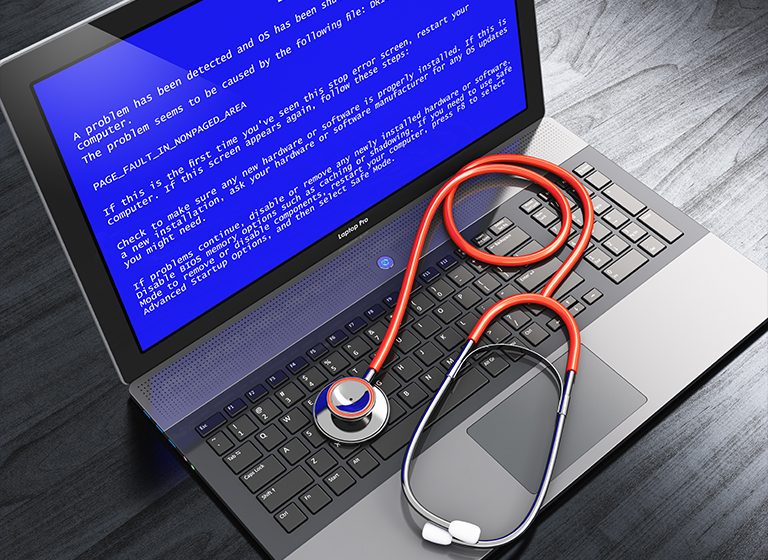Windows_Critical_Structure_Corruption: Fix Blue Screen of Death

Windows critical structure corruption: an overview
Yet another Blue Screen of Death Error (BSOD) thrown as Windows_Critical_Structure_Corruption error is witnessed by Windows 10 users, most of the time triggered by hardware issues, system instability, hard driver issues, corrupted system files, or abrupt system shutdown. When important operating system processes require the smooth functioning of Windows, they stop working, and this error occurs.
Reasons of Windows critical structure corruption
- Inadvertent or intentional modification of critical kernel code or data by driver.
- Corruption of hardware like kernel code or data stored in memory that failed.
- Corrupt or faulty drivers
- Faulty memory card or Motherboard
Some basic troubleshooting techniques to fix this error
- Take help of Event Viewer: Check the system log in event viewer to see error message which can help you know driver or device which is probably causing this issue. Follow the steps given below to check Event viewer:
- Go to Start and type event viewer in search box
- Open Event Viewer
- Expand Windows Logs
- Select System
- Scroll to log to find the error and click on it.
- General information about the error will be displayed in window under the log window.
- Updating problematic driver: If a driver is identified as cause of error, you can disable that driver or check with the manufacturer for driver updates. Follow the steps given below to disable driver:
- Go to Start and type Device manager in search box and open it
- Scroll the device driver list to see any driver with yellow exclamation (!) sign against it.
- Right-click the driver and select Disable device
- Click yes
- Run Windows Memory Diagnostic Tool: Test the memory by running Windows Memory Diagnostic tool. Follow the steps given below to run Windows Memory Diagnostic tool:
- Go to Start and type Memory in search box.
- Open Windows Memory Diagnostic.
- Select Restart now check for problems (recommended).
- Save all the unsaved work before you restart computer.
- Open Event Viewer to see results under System log (steps i-iv in the beginning paragraph).
- To view result find MemoryDiagnostics-Result in entries list.
- Make sure that the newly installed hardware is compatible with the Windows version installed on your computer.
Methods to fix Blue Screen of Death
Method 1: Boot Windows in Safe mode
Before you start any method to resolve the issue, you are recommended to run your computer in safe mode as this disables all nonessential drivers or programs running in background which can be the cause of issue in system and you can focus on the concerned area of issue only. Follow the steps given below to start Windows in Safe mode:
- Long press Shift key
- Press Power
- Press Restart
- Choose an Option screen will appear. Select
- In Advanced Options. Wizard, select Startup Settings.
- Press Restart
- Press function key F5 to select Enable Safe Mode with Networking
Method 2: Perform Clean Boot
Clean boot runs the computer with least number of drivers and programs to curtail any nonessential startup programs which may cause issues for Windows. Follow the steps given below to perform clean boot:
- Press Win + R keys together to open Run box
- Type msconfig in run box
- Click Ok
- Select tab Services, check the box Hide all Microsoft services and click
- Select tab Startup and click on Open Task Manager.
- Find and select faulty item and right click it.
- Select Disable
- Close Task manager
- Select Ok
- Restart your PC
Method 3: Run BSOD Troubleshooter
This is built-in tool to troubleshoot BSOD. Follow the steps given below to run BSOD troubleshooter:
- Press Win + X
- Select Settings
- Find Update & Security and open it
- Click Troubleshoot in menu on left-hand side
- Under Find and fix other problems, select BSOD
- Press Run the troubleshooter
- Follow the further instructions
- Once process is complete, restart your computer
Method 4: Update Graphic Drivers
Follow the steps given below to update Graphic driver
- Press Win + X
- Select Device manager
- Scroll the list of drivers to find Display adapters.
- Expand it and right-click to select Update driver.
- Select Search automatically for drivers.
- Once search is complete and no updated driver software is available then again follow steps 3
- Right-click and select Uninstall driver, confirm and close the window
- Restart your computer
Method 5: Run SFC/Scannow
Follow the steps given below to run SFC/Scannow
- Click Windows + X and select Command Prompt (Admin).
- Select Run as Administrator
- Type sfc/scannow and press Enter
- System will scan and find corrupt file and repair it.
- Once process is complete check if the issue is resolved.
Method 6: Reinstall Windows
When none of the above methods are able to resolve the issue, try to reinstall your Windows. This is to be noted that this process may lead to loss of data thus it is always recommended that you should take regular back-ups of your data. In case you lose your data without backup then you can take help of Kernel for Windows data recovery tool.
Conclusion:
While trying to resolve BSOD due to Critical structure corruption you may lose data on your computer. If you have lost the same and have failed to keep the backup as well then you don’t need to worry as you can recover this lost data using Kernel for Windows Data Recovery tool. This tool helps you in repairing the corrupt data irrespective of the cause and extent of corruption and restoring the same in any format and location of your choice. It is a reliable and easy-to-use tool. We hope you find this blog helpful.

